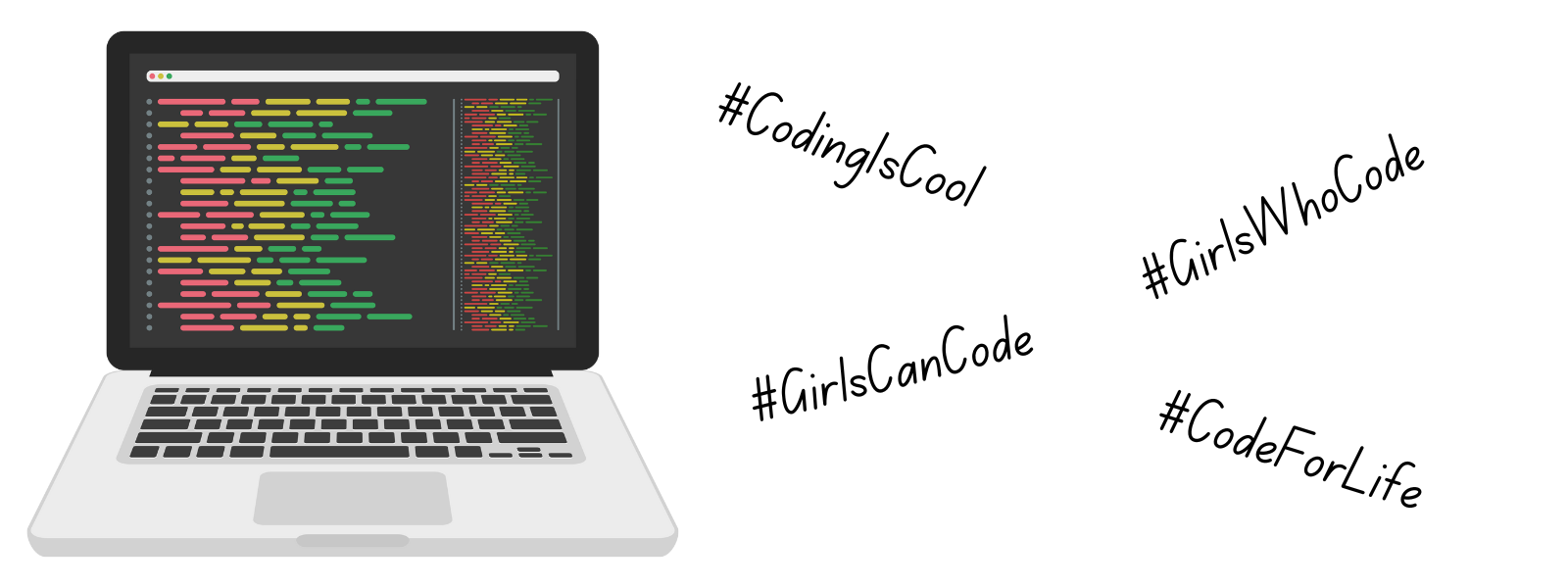What I learnt from "Girls Who Code".
Do you think tech is only for boys? Do you think coding is not your thing? Well, Girls Who Code is definitely going to change your mind!

A little while ago, I was reading a very interesting (and funny 😆) book. It is called Girls
Who Code, and would very much love to share what I learnt from it. Girls Who Code is an
international movement, and their mission is to close the tech gender gap. It was founded in 2012 by
Reshma Saujani during her run for the United States Congress. Now, enough about that. Let's move
onto code. With code, you can make anything. Whether it's an app to remind you about your BFF's
birthday, or a website for your dog-walking business, code can let you use your computer in ways you
haven't even dreamed up yet! If it weren't for code, you wouldn't be reading this right now.
So, let me give you a tip. Computer coding is... mainly problem solving! Really, it is not much
other
than that. So now, let's look at the steps for a computer to process code. First, it's the Input.
The Input is any info you give to the computer. The computer then takes the information you've given
to it, then it processes the Input to produce the desired Output. Take Calculator for example. You
give the Input as the calculation you want it to calculate, the it gives you the Output which is the
answer to your question. Another example is Alexa. Alexa is a voice-activated AI made by Amazon.
When you ask Alexa to play music. For example: "Alexa, play Cover Me In Sunshine", you give the
Input, then when Alexa plays the music, she is giving you the Output. Next
comes the step of Processing the code.
Processing means the computer runs the code, and it displays it. It does take some time though for
the computer to proooocess the code. Then, dun dun dun! It's... the Output! The Output is the
finishing result of your code. It's when the computer turns all that flabby-jabby code into whatever
you want it to look like. So there. You have... the Coding Process.
Now, you might have heard the terms "Software" and "Hardware" somewhere. But you might be wondering,
what is
that stuff? Are you talking in another language Mahi? No, I am not speaking in another language.
This is English. So software is all the initial code inside a program. It is what tells a computer
what to display on the screen. Like when you want to watch TV, the TV doesn't just start magically
playing what you want to watch. You need to get the remote, turn the TV on, find what you want to
watch and once you've found it, you need to click PLAY. What you just did, is an example of
"Software". Now, lets move onto "Hardware". Hardware is all the physical parts of a computer like
the keyboard, screen, camera etc. It is also all the parts which process, display and make the
computer function.
Now that you know what the Coding Process and what Software and Hardware are, we are now going to
learn about the "Compiler". The "Compiler" was created by Grace Murray Hopper. While working on the
UNIVAC 1 and 2 in 1952, Grace came up with idea of a machine which could translate binary (a
language computers understand made entirely out of 0s and 1s) into human readable language. It was a
very handy tool in programming.
Now here are some other bits and bobs you should know about coding.
The CORE4
The CORE4 is a group of 4 things in coding. Variables, loops, conditionals and functions are all the
parts of The CORE4. A variable is like a container which you use to store information. A loop is
where
you repeat. A conditional is when you want a computer to decide something. This is what a
conditional
looks like in code:
if(makingMealFor == "Ananya")
{
spiceLevel = "none";
}
And a function is simply a "chunk" of code that you can use over and over again instead of typing it
out multiple times.
The Design, Build and Test cycle is also very important. It is how a website is actually developed.
Here are some very handy tips while you code.
1. Keep things neat and tidy (backup everything).
2. Embrace Imperfection.
3. Break coding into small parts.
4. Be lazy and use shortcuts.
 Lets Go Mahi!
Lets Go Mahi!